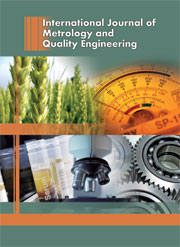Article contents
Sampling strategies and long term variation modellingfor a statistical feed-forward controller
Published online by Cambridge University Press: 13 May 2013
Abstract
The Statistical Feed-Forward Control Model (SFFCM) relies on a sequence of specification adjustments made on subsets of a population to counter the influence of the long time component of the variation. The difficulty strives in finding a proper estimate for the measure of the central tendency of each subset to minimize the number of the required adjustments. By means of simulating the assembly of two components having high dimensional variation, forty experiments were designed to compare the individual influence of different factors such as the number of adjustments, the sampling strategy and two measures of central tendency: the sample mean and the cumulative de-noised average. Simulation results showed that, regardless of the sampling strategy but keeping the inspection rate at 20%, the use of the cumulative de-noised average instead of the sample mean made possible to reduce the number of adjustments by 20%. Thus, while the shift mean of the resulting assembly was decreased by 90%; the standard deviation was reduced by 15%. Hence, the selection of a proper central tendency measure is crucial when modeling the long time variation. The cumulative de-noised average proved to be a valid alternative.
Keywords
- Type
- Research Article
- Information
- International Journal of Metrology and Quality Engineering , Volume 3 , Issue 3 , 2012 , pp. 151 - 154
- Copyright
- © EDP Sciences 2013
References
- 1
- Cited by


